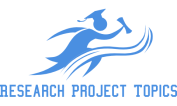DESIGN AND IMPLEMENTATION OF A FIXED ASSET MANAGEMENT INFORMATION SYSTEM (A CASE STUDY OF UNITED AFRICAN COMPANY OF NIGERIA (UACN) DEVELOPMENT COMPANY PLC LAGOS)
- Format: Ms Word Document
- Pages: 58
- Price: N 3,000
- Chapters: 1-5
- Get the Complete Project
ABSTRACT
With the rapid development in Computer Technology, most organization have embraced the use of computer resources in its activities to enable them achieve its set down objectives. Electronic data processing is a wonderful tool which is used extensively in financial accounting to implore performance and accuracy.
The principle aims of a fixed asset management information system is to create automatic, understandable and efficient system that will eliminate the problems of determining the asset depreciation and value of the conventional system.
The work identifies the various handicaps and significance of fixed asset system in the introductory section, so that proper solution could be proffered.
Moreso, the project critically evaluates some concepts of fixed asset depreciation in the review of past literature.
However, the existing system and its operation was clearly studied to infer proper understanding of the manual approach and justification for a system support. Hence, the new systems design that provides the input and output specification, file analysis form, the piecemeal for the program design.
Furthermore, the project explicit shows the algorithms that really produce the source code and flowchart under the umbrella of project documentation the work explains how the new system could be used via the function keys, password, modification and finally recommendation that will assist in system maintenance.
ORGANIZATION OF WORK
This project work is organized into seven, chapter one introduces the fixed asset information system, depreciation, the statement of the problem, purpose of the study, aims and objectives, scope, constraints, assumption and definition of terms.
Chapter two tackled about reviews of related literature with emphasis on method of depreciation.
Chapter three presents the description and analysis of the existing system. There are facts finding methods organizational structure objective of the exiting system, input, process, out put analysis, justification for he new system.
In chapter four, design of the new system, the output and input specification and design procedural chart system, flow chart and system requirement.
Chapter five deals with the implementation under this title program design. Program flow chart, source program and test run were discussed.
Chapter six discussed the documentation and chapter seven summarizes the work under recommendation and conclusion.
